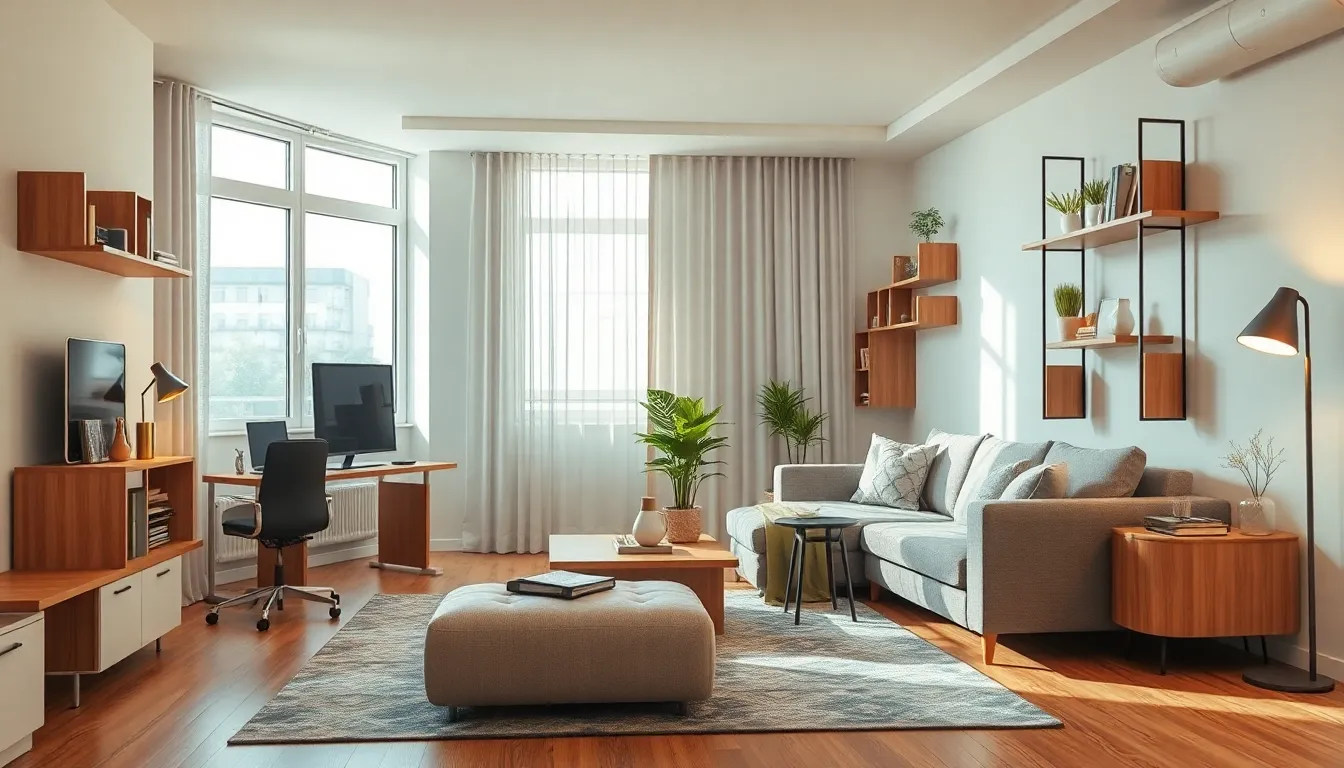Table of Contents
TogglePicture this: it’s a sweltering summer night, and you’re tossing and turning like a fish out of water. The sweat’s pooling on your forehead while your dreams of a cool, blissful slumber slip away faster than an ice cube on a hot sidewalk. If only there were a way to turn down the heat and turn up the comfort!
Fear not, sleep seekers! With a few clever tricks, anyone can transform their bedtime routine into a cool oasis. From adjusting your bedding to mastering the art of fan placement, there’s a treasure trove of tips waiting to help anyone sleep like a baby in a snowstorm. Get ready to say goodbye to sleepless nights and hello to refreshing rest.
Understanding Sleep Temperature
Achieving an optimal sleep temperature is crucial for restful nights. The right temperature leads to better sleep quality, enhancing overall well-being.
The Importance of Sleep Temperature
Maintaining a comfortable sleep temperature supports restful sleep. Research indicates that ideal sleeping temperatures range between 60°F and 67°F. Within this range, individuals find it easier to fall asleep and stay asleep throughout the night. An environment that’s too hot can lead to restlessness and interruptions. Adjusting bedroom conditions, like bedding and airflow, becomes essential. Improved sleep quality not only boosts mood but also enhances cognitive function.
How Temperature Affects Sleep Quality
Temperature plays a significant role in sleep quality. When the body cools, it signals the brain that it’s time to sleep. High temperatures can hinder this natural process, causing disturbances and decreasing sleep efficiency. According to studies, heat increases wakefulness and reduces rapid eye movement (REM) sleep. A cooler environment promotes deeper sleep cycles. Strategies like using breathable fabrics and fans can aid in keeping the body cool. Efforts to optimize temperature contribute positively to nightly rest.
Tips for a Cooler Sleep Environment
Creating a cooler sleep environment is essential for restful nights. Implement the following strategies to enhance nightly comfort.
Choosing the Right Bedding
Selecting breathable materials is crucial. Cotton sheets regulate temperature well and wick moisture away. Linen or bamboo options also offer excellent breathability. Consider lighter blanket options that provide warmth without overheating. Memory foam mattresses can trap heat, so cooling gel-infused types work better during hot nights. Invest in moisture-wicking pillowcases to reduce sweat and promote cooler sleep. Each of these choices can impact overall sleep quality.
Adjusting Room Temperature
Establish an optimal room temperature for sleep. Keeping the thermostat between 60°F and 67°F creates a favorable environment. Utilize fans for additional air circulation, especially in warmer climates. Close curtains or blinds during the day to block sunlight and heat from entering. Nighttime ventilation is beneficial when outdoor temperatures drop. Adjusting clothing layers also helps; lighter pajamas encourage better airflow. Each adjustment contributes to a cooler, more comfortable sleeping atmosphere.
Cooling Sleep Accessories
Cooling sleep accessories help create a more comfortable sleeping environment during warm nights. They promote better sleep quality by maintaining the ideal temperature range.
Mattresses and Mattress Toppers
Investing in cooling mattresses enhances comfort while reducing nighttime heat. Gel-infused memory foam mattresses offer both support and breathability. Mattress toppers with cooling technology add an extra layer of comfort and temperature regulation. Look for options made from materials like breathable latex or specialized cooling gel. Proper airflow in these products prevents heat retention, ensuring a more restful sleep.
Pillows and Sheets
Selecting cooling pillows and sheets significantly impacts sleep comfort. Cooling gel or breathable memory foam pillows provide support and dissipate heat. Cotton or bamboo sheets enhance airflow, further aiding in temperature regulation. These materials also wick away moisture, keeping the sleeper dry. Changing sheets regularly helps maintain freshness and comfort throughout the night.
Lifestyle Changes for Better Sleep
Making specific lifestyle changes can significantly improve sleep quality. These adjustments promote a cooler environment conducive to restful nights.
Managing Electronics and Light Exposure
Limiting electronic device usage before bedtime enhances sleep quality. Blue light emitted by phones and computers interferes with melatonin production. Reducing exposure to screens at least 30 minutes prior to sleep supports better rest. Utilizing settings that minimize blue light can also benefit sleep patterns. Ensuring the bedroom remains dark encourages relaxation, so consider using blackout curtains. Night mode settings on devices help, but complete shut-off is optimal. Keeping electronic devices away from the sleep area further reduces distractions.
Incorporating Relaxation Techniques
Incorporating relaxation techniques is essential for achieving restful sleep. Practicing deep breathing or meditation can effectively calm the mind. Regular yoga sessions promote relaxation and prepare the body for sleep. Creating a bedtime routine helps signal the body that it’s time to wind down. Engaging in gentle stretching before bed reduces tension and promotes comfort. Listening to soothing music or nature sounds can also aid in relaxation. Dim lighting during these activities enhances the calming effect, fostering a peaceful atmosphere.
Achieving a cooler sleep environment is essential for restful nights and improved well-being. By implementing the right strategies and making thoughtful choices about bedding and room temperature, anyone can create a more comfortable sleeping space.
Investing in quality sleep accessories and adopting healthy nighttime habits can make a significant difference. With the right approach, it’s possible to enjoy deeper sleep cycles and wake up refreshed. Embracing these changes not only enhances sleep quality but also positively impacts overall mood and cognitive function. A cooler night’s sleep is within reach for those ready to take action.





